Birdfinding.info ⇒ Easy to find in its minuscule range. This species is naturally confined to an isolated land mass of 10 square miles, and it can be found wherever suitable habitat exists within that limited area. Reliable sites include Old Point, Big Pond, and the San Andrés Botanical Garden.
San Andrés Vireo
Vireo caribaeus
Endemic to Isla San Andrés (Colombian territory about 120 miles east of central Nicaragua), where it is common in most available habitats, including mangroves, scrub, borders, and gardens.
Identification
A drab vireo with two whitish wingbars and yellow lores. Upperparts are plain olive, grayish on the head and somewhat yellower on the back, wings, and tail. Underparts whitish with a yellowish or olive wash on the sides of the breast. Normally the only wing-barred vireo in its range, so identification is straightforward.
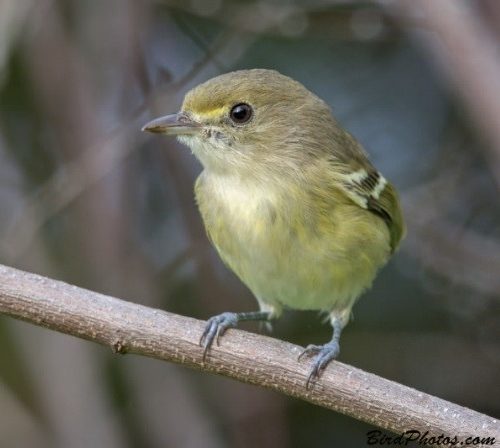
San Andrés Vireo. © Tom Friedel
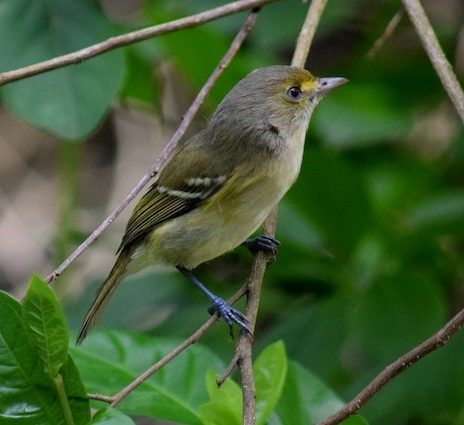
San Andrés Vireo. (Isla San Andrés, Colombia; December 6, 2017.) © Vukasin Marinovic

San Andrés Vireo. (Isla San Andrés, Colombia; October 15, 2014) © Félix Úribe
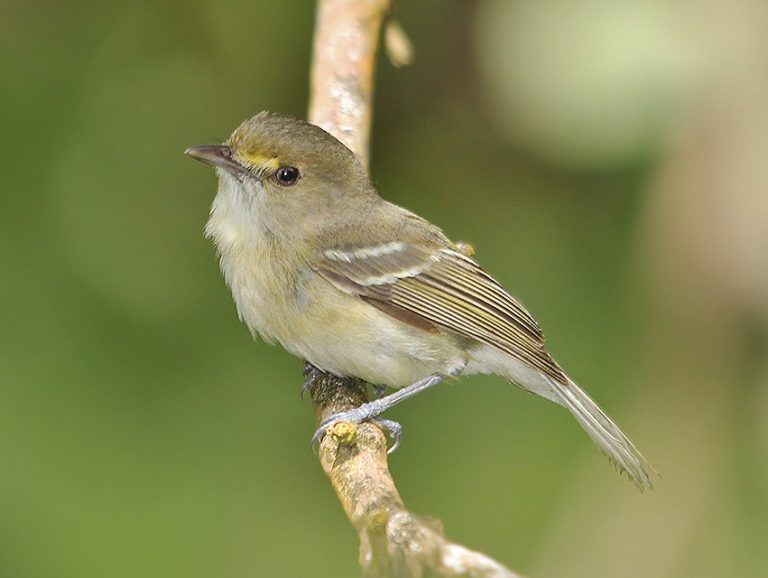
San Andrés Vireo. (Manglares de Old Point National Park, Isla San Andrés, Colombia; May 24, 2015.) © Adrian Braidotti
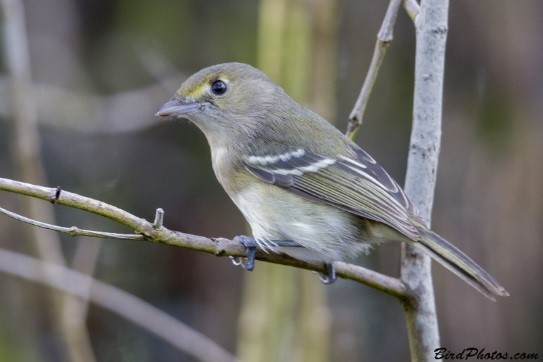
San Andrés Vireo. © Tom Friedel
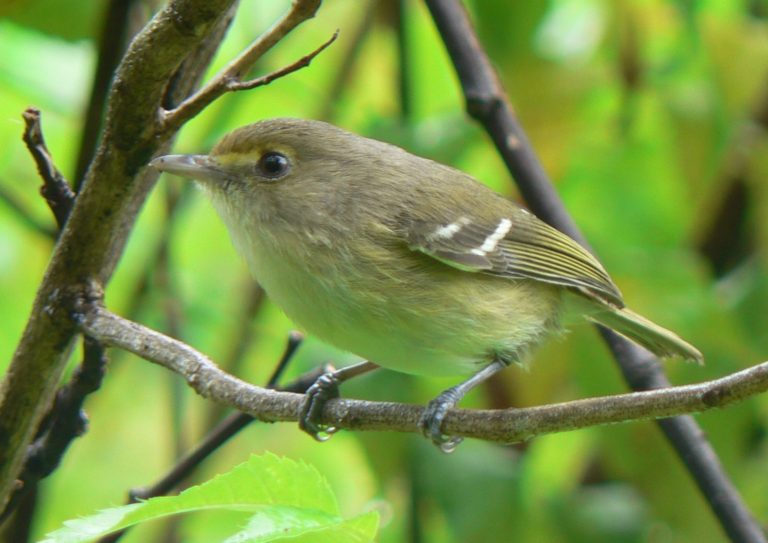
San Andrés Vireo. (Isla San Andrés, Colombia; January 4, 2012.) © Trevor Ellery

San Andrés Vireo. (Isla San Andrés, Colombia; March 12, 2018.) © thibaudaronson
Voice. A highly vocal species that gives a wide variety of raspy, chattering calls. Some of its songs are rapid series of evenly spaced notes: Some end with a separate more emphatic note: Also buzzy scolding:
Notes
Monotypic species.
IUCN Red List Status: Vulnerable.
References
BirdLife International 2016. Vireo caribaeus. The IUCN Red List of Threatened Species 2016: e.T22705203A94005439. http://dx.doi.org/10.2305/IUCN.UK.2016-3.RLTS.T22705203A94005439.en. (Accessed November 15, 2018.)
Brewer, D. 2018. San Andres Vireo (Vireo caribaeus). In Handbook of the Birds of the World Alive (J. del Hoyo, A. Elliott, J. Sargatal, D.A. Christie and E. de Juana, eds.). Lynx Edicions, Barcelona. https://www.hbw.com/node/61245. (Accessed November 15, 2018.)
eBird. 2018. eBird: An online database of bird distribution and abundance. Cornell Lab of Ornithology, Ithaca, N.Y. http://www.ebird.org. (Accessed November 15, 2018.)
Gómez Montes, C. 2011. San Andres Vireo (Vireo caribaeus), version 1.0. In Neotropical Birds Online (T.S. Schulenberg, ed.). Cornell Lab of Ornithology, Ithaca, New York. https://doi.org/10.2173/nb.stavir1.01.
Raffaele, H., J. Wiley, O. Garrido, A. Keith, and J. Raffaele. 1998. A Guide to the Birds of the West Indies. Princeton University Press, Princeton, N.J.
